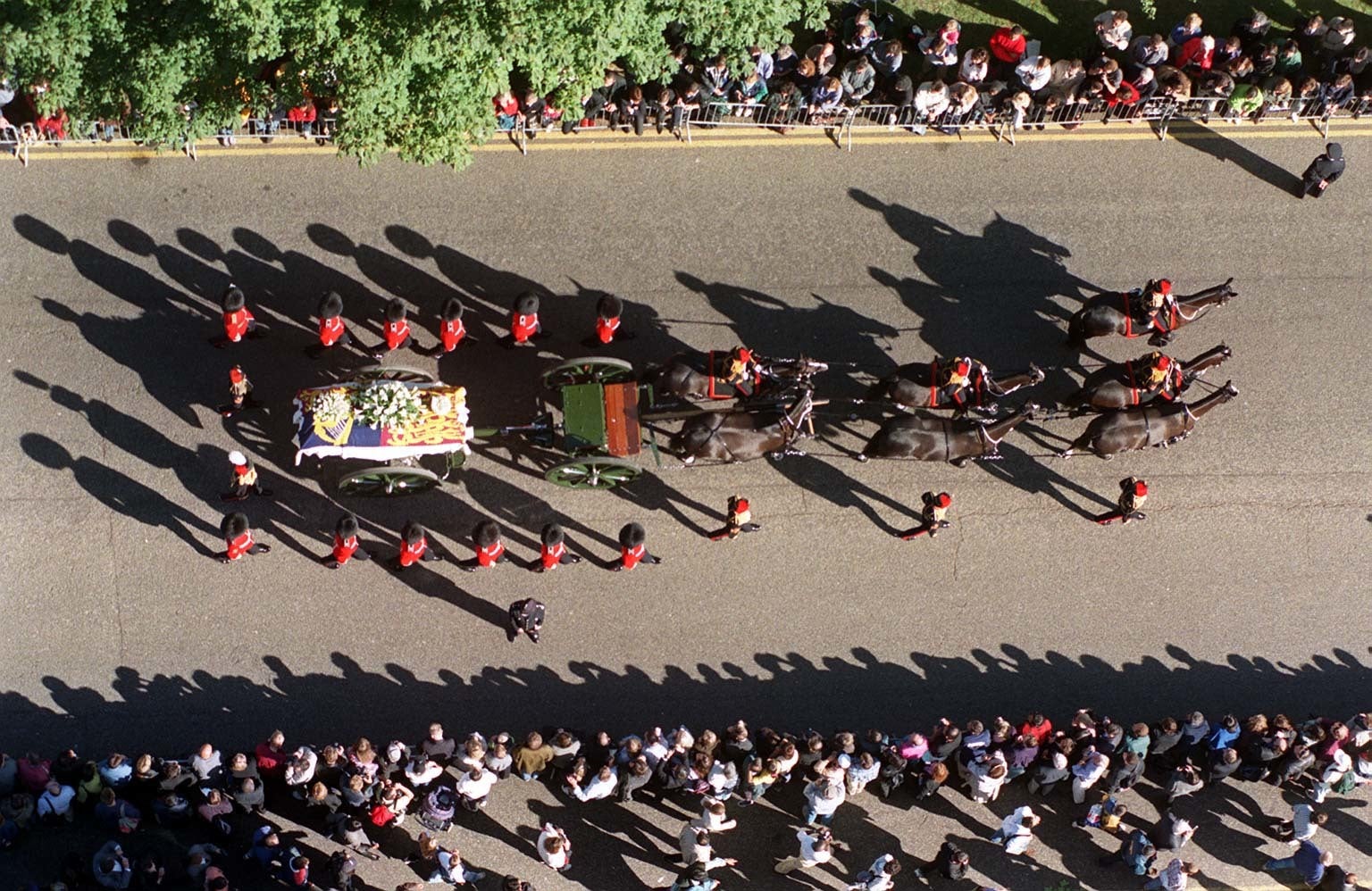Queen’s funeral could see one of the largest TV audiences for decades
A combined TV audience of well over 20 million is possible.

Your support helps us to tell the story
From reproductive rights to climate change to Big Tech, The Independent is on the ground when the story is developing. Whether it's investigating the financials of Elon Musk's pro-Trump PAC or producing our latest documentary, 'The A Word', which shines a light on the American women fighting for reproductive rights, we know how important it is to parse out the facts from the messaging.
At such a critical moment in US history, we need reporters on the ground. Your donation allows us to keep sending journalists to speak to both sides of the story.
The Independent is trusted by Americans across the entire political spectrum. And unlike many other quality news outlets, we choose not to lock Americans out of our reporting and analysis with paywalls. We believe quality journalism should be available to everyone, paid for by those who can afford it.
Your support makes all the difference.The funeral of Queen Elizabeth II is likely to attract one of the largest UK television audiences of recent decades.
A benchmark for comparison is the funeral service for Diana, Princess of Wales on September 6, 1997, which was watched by an average of 32.1 million people, including 19.3 million on BBC One and 11.7 million on ITV.
No royal event since then has come close to matching such huge ratings.
The wedding on April 29, 2011 of the then Prince William and Kate Middleton attracted an average audience of 13.6 million on BBC One and 4.0 million on ITV.
Coverage of the funeral of the Queen Mother on April 9, 2002 – a working day – was seen by an average of 5.1 million people on BBC One, while 2.7 million chose ITV.
More recently, an average of 6.8 million watched BBC One’s coverage of the funeral of the Duke of Edinburgh on April 17, 2021 – more than twice the number for ITV.
Ratings data is published by the audience research organisation Barb.
Comparable figures begin in August 1981, meaning there is no accurate or reliable data for earlier events.
For example, the BBC said the state funeral in January 1965 of former prime minister Sir Winston Churchill was watched by 20 million people on its own network and only five million on ITV, but this was based on the BBC’s own audience research and was not independently verified.
A combined UK TV audience of over 20 million is likely for the Queen’s funeral on September 19, based on ratings for similarly high-profile recent occasions.
The opening and closing ceremonies of the London 2012 Olympic Games both topped the 20 million mark (24.2 million and 24.5 million respectively on BBC One), as did the final of the Euro 2020 football championship on July 11 2021 (a combined total of 22.5 million for BBC One and ITV), and the announcement by former prime minister Boris Johnson on March 23, 2020 of the first Covid-19 lockdown (28.2 million across six channels).
The Queen’s televised address during the Covid lockdown on April 5, 2020, in which she echoed Dame Vera Lynn’s wartime song and told the nation “we will meet again”, was watched by 24.3 million across seven channels.
All figures are consolidated ratings, meaning they include people who recorded and watched a broadcast up to seven days later – the industry standard for measuring TV audiences.
Coverage of the Queen’s funeral will be on a vastly larger scale than that organised for her father, King George VI.
The King’s funeral on February 15, 1952 took place at St George’s Chapel in Windsor Castle and was not televised, though the BBC had cameras outside to record pictures for a newsreel transmitted that evening.
The full funeral service, along with the King’s journey from Westminster Hall where he had been lying in state, was described to listeners of BBC radio.
The Queen’s funeral is taking place at Westminster Abbey and is due to begin at 11am on Monday.
BBC One will broadcast uninterrupted coverage of the funeral from 8am to 5pm, with ITV’s coverage starting at 9.30am.